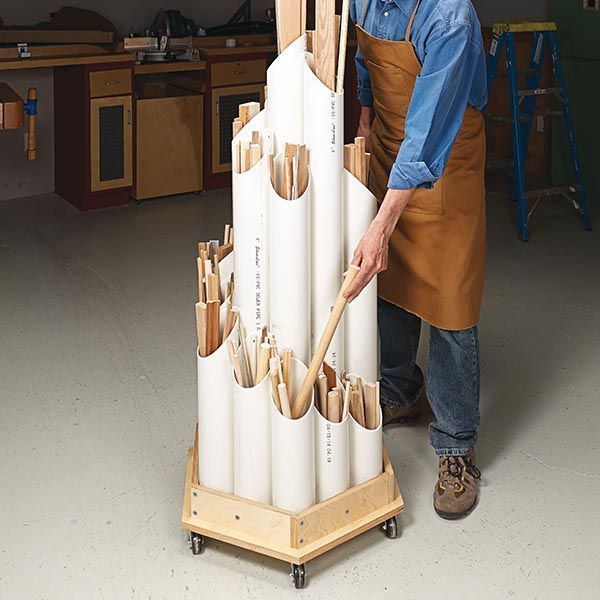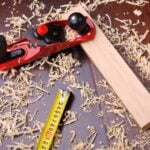What does a woodworking lathe do? A woodworking lathe is a crucial tool in the woodworking industry, used for shaping wood into various forms and designs. From creating intricate designs on furniture to crafting decorative items, a woodworking lathe plays a vital role in turning raw wood into beautiful and functional pieces.
The history of woodworking lathes dates back centuries, with the earliest forms being operated by hand. Over time, lathes have evolved in design and functionality, making them more efficient and versatile for woodworkers. Understanding the anatomy of a lathe is essential in comprehending how this tool operates and its various components that contribute to its function.
Different types of woodworking lathes are available to cater to specific needs and projects. From traditional lathes to modern CNC lathes, each type offers unique features that accommodate different woodworking techniques. Understanding these types can help woodworkers select the right lathe for their specific projects.
In this article, we will explore the purpose and importance of a woodworking lathe in detail, including its history, anatomy, functionality, various types, operational processes, safety precautions, and tips for choosing the right one. Whether you are new to woodworking or an experienced professional, understanding the role of a lathe is essential for mastering the craft.
History of Woodworking Lathes
The history of woodworking lathes dates back to ancient civilizations, where they were used to craft a variety of items such as bowls, furniture legs, and even weapons. The first lathes were operated by hand using a pedal or a bow, and later evolved to be powered by water or steam. This marked the beginning of an important technological advancement in the woodworking industry.
One significant milestone in the evolution of woodworking lathes was the introduction of the electric lathe in the 19th century. This innovation revolutionized the way woodturning was done, making it faster and more efficient. As technology continued to progress, modern woodworking lathes are now equipped with variable speed controls, digital readouts, and advanced safety features.
The evolution of woodworking lathes has also led to the development of different types of lathes to cater to specific woodworking needs. From traditional spindle lathes to versatile CNC (computer numerical control) lathes, woodworkers now have a wide range of options to choose from based on their projects and skill level. The rich history and continuous advancements in woodworking lathes highlight their significance in shaping the art and craft of woodturning.
| Woodworking Lathe Evolution | Significance |
|---|---|
| Hand-operated lathes | Marked the beginning of woodturning |
| Electric lathe | Revolutionized woodturning with increased speed and efficiency |
| Modern lathes with advanced features | Cater to specific woodworking needs and skill levels |
Anatomy of a Woodworking Lathe
A woodworking lathe is an essential tool in the woodworking industry, used for shaping and cutting wood into various forms. Understanding the anatomy of a lathe is crucial for anyone looking to use this tool effectively. A woodworking lathe is made up of several key components, each serving a specific function in the wood turning process.
Bed
The bed of a woodworking lathe is the horizontal base that supports the other parts of the machine. It provides stability and rigidity to the lathe, ensuring that it remains steady during operation. The length of the bed determines the maximum length of material that can be turned on the lathe.
Headstock
The headstock is located at one end of the bed and contains a spindle that holds the workpiece in place. It also houses the motor and various speed control mechanisms, allowing for adjustments to be made during turning.
Tailstock
The tailstock is positioned at the opposite end of the headstock and serves as a support for the other end of the workpiece. It can be adjusted along the length of the bed to accommodate different workpiece lengths.
Tool Rest
The tool rest is a horizontal platform that supports cutting tools while they are in use. It can be adjusted and positioned closer or further away from the workpiece, depending on specific requirements.
Understanding how these components work together is essential for anyone looking to utilize a woodworking lathe effectively and safely. Knowing how each part functions allows for better control over the turning process, resulting in more precise and high-quality output.
Types of Woodworking Lathes
Woodworking lathes come in a variety of types, each designed for specific uses and projects. One common type is the traditional or bench lathe, which is typically used for smaller, more intricate woodworking projects. These lathes are compact and versatile, making them ideal for woodturning hobbyists and beginners. On the other hand, larger industrial lathes, such as the floor-standing lathe, are better suited for professional woodworkers who handle larger and more complex projects.
Another type of woodworking lathe is the CNC (Computer Numerical Control) lathe, which is a highly automated and precise machine used in advanced manufacturing processes. This type of lathe allows for intricate designs and patterns to be created with minimal manual intervention, making it popular in commercial woodworking operations. Additionally, specialized lathes like the pen lathe or bowl lathe are designed for crafting specific items such as pens or bowls, catering to niche woodworking interests.
It’s important to consider the specific requirements of your projects when choosing a woodworking lathe. Factors such as the size of the workpiece, desired level of automation, and budget should all be taken into account when selecting the right type of lathe for your needs. Whether you’re a beginner looking to explore woodturning as a hobby or a professional seeking precision and efficiency in your woodworking projects, there’s a woodworking lathe out there that fits your requirements.
How Does a Woodworking Lathe Work
A woodworking lathe is a versatile tool that is used to shape wood into a variety of forms, such as bowls, spindles, and decorative items. The lathe works by spinning the wood at high speeds while a cutting tool is pressed against it to remove material and create the desired shape. This process allows for intricate and precise woodworking, making it a valuable tool for both professional woodworkers and hobbyists alike.
Key Components of a Woodworking Lathe
– Headstock: This is where the power for the lathe is generated, and it holds the spindle that rotates the wood.
– Tailstock: The tailstock provides support for the opposite end of the piece being turned, helping to stabilize and secure it during operation.
– Tool Rest: This adjustable component supports the cutting tools as they work on the spinning wood, ensuring accuracy and safety.
– Bed: The bed is the horizontal base of the lathe that supports all of its components and provides stability.
The Process of Using a Woodworking Lathe
1. Choose and prepare your wood – Select a suitable piece of wood for your project and ensure it is securely mounted onto the lathe using a spur center or faceplate.
2. Set up your tools – Position the tool rest to provide support for your cutting tools as you shape the wood.
3. Start spinning – Turn on the lathe to begin rotating your piece of wood at your desired speed using either electronic controls or belt adjustments.
4. Begin shaping – Use various cutting tools, such as gouges or chisels, to carefully remove material from your spinning piece of wood in order to achieve your desired form.
5. Finishing touches – Sanding, polishing, or applying finishes can be done while the lathe continues running once you have completed shaping.
Techniques Used With a Woodworking Lathe
By understanding how a woodworking lathe works and mastering various techniques, craftsmen can unlock their creativity in creating unique wooden pieces.
Projects That Can Be Done With a Woodworking Lathe
Woodworking lathes are incredibly versatile tools that can be used to create a wide variety of items. From decorative pieces to functional objects, the possibilities are endless with a woodworking lathe. Here, we will explore some of the projects that can be done with this amazing tool, showcasing the wide range of items that can be made using a lathe.
Bowls and Plates
One of the most popular projects that can be done with a woodworking lathe is creating bowls and plates. Using a block of wood, woodworkers can use the lathe to shape and hollow out the material to form beautiful and functional bowls and plates. With different techniques and finishes, these items can become stunning pieces of art or practical kitchenware.
Pens and Pencils
Another popular project for woodworking lathes is creating pens and pencils. By turning down small pieces of wood or acrylic, woodworkers can craft unique writing instruments that make great gifts or sellable items. The lathe allows for precise shaping and detailing, resulting in high-quality pens and pencils.
Table Legs and Spindles
Woodworking lathes are also commonly used for creating table legs and spindles for furniture. Whether it’s a dining table, chair, or staircase railing, the lathe enables woodworkers to produce identical turned legs and spindles with ease. This not only adds efficiency in production but also ensures uniformity in design.
With its ability to turn raw materials into finely crafted objects, a woodworking lathe is an essential tool for any woodworker looking to create an array of impressive items. Whether it’s bowls, pens, table legs or other specialty items; there is no limit to what one can create with this remarkable machine.
Safety Precautions When Using a Woodworking Lathe
Woodworking lathes are incredibly versatile and useful tools, but they can also be dangerous if not used properly. Whether you are a seasoned professional or a beginner, it is important to always prioritize safety when operating a lathe. Here are some tips and guidelines to help ensure your safety while using a woodworking lathe:
- Wear the Right Safety Gear: Before turning on your lathe, make sure to put on the appropriate safety gear, including safety goggles, a dust mask, and ear protection. Loose clothing, long hair, and jewelry should be secured or removed to avoid getting caught in the moving parts of the lathe.
- Inspect and Maintain Your Lathe: Regularly inspect your lathe for any signs of wear or damage. Make sure all the components are properly aligned and in good working condition. Keep the lathe clean and well-maintained to prevent any accidents caused by mechanical failure.
- Practice Proper Technique: Always follow proper turning techniques and use sharp tools. Using dull tools can cause kickback, resulting in injury. It is also important to maintain control of the wood at all times and avoid standing directly in line with the spinning workpiece.
Following these safety precautions will help minimize the risk of accidents and ensure that you can enjoy using your woodworking lathe safely for years to come.
By keeping these tips in mind, you can greatly reduce the risks associated with operating a woodworking lathe and create beautiful projects with peace of mind knowing that you are taking steps to protect yourself from potential hazards. Remember that no project is worth compromising your safety, so always make sure to prioritize safe practices when using a woodworking lathe.
Tips for Choosing the Right Woodworking Lathe
In conclusion, a woodworking lathe is an essential tool in the woodworking industry, allowing for the shaping and carving of various wooden materials. As demonstrated in this article, woodworking lathes have a long history and have evolved over time to cater to different needs and preferences. Understanding the anatomy and types of lathes available is crucial in order to make an informed decision when purchasing one.
When considering the purchase of a woodworking lathe, there are several factors to take into account. These include the size of the lathe, the type of projects you intend to work on, your level of expertise, and your budget. It is important to research and compare different lathes before making a decision in order to find the best option that suits your specific needs.
For beginners, it is recommended to start with a smaller lathe that is easier to handle and learn on. Additionally, investing in quality safety equipment and familiarizing yourself with safety precautions is vital when operating a lathe. Whether you are interested in woodturning as a hobby or professionally, choosing the right woodworking lathe will greatly impact the outcome of your projects and overall experience.

Hi everyone! I’m a woodworker and blogger, and this is my woodworking blog. In my blog, I share tips and tricks for woodworkers of all skill levels, as well as project ideas that you can try yourself.





